LEGO Braille – Braille Bricks for Blind and Visually Impaired Children!
What is Braille?
Braille is a system of raised dots that can be read with the fingers by blind or visually impaired people. Teachers, parents and others who are not visually impaired usually read Braille with their eyes. Braille is not a language. Rather, it is a code whereby many languages, such as English, Spanish, Arabic, Chinese and dozens of others, can be written and read. Braille is used by thousands of people around the world in their native languages and provides a means of literacy for all. The specific code used in the United States was American Edition English Braille, but since 2016 the primary code for reading the material is Unified English Braille, a code used in seven other English-speaking countries.
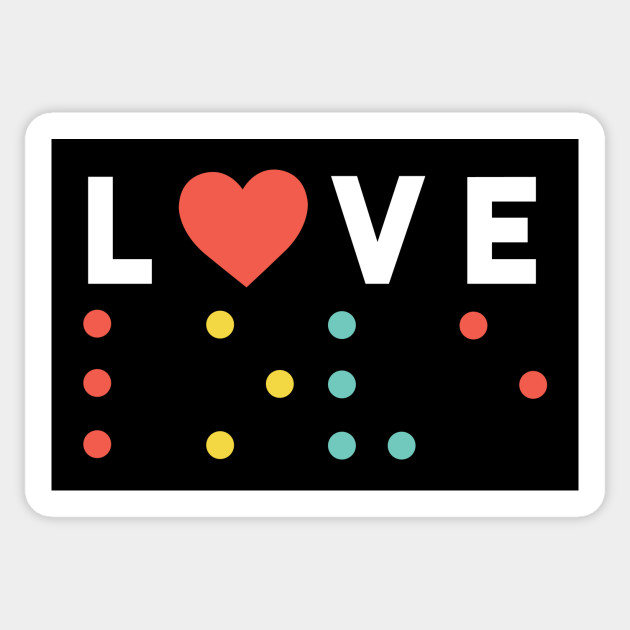
What Does Braille Look Like?
Braille symbols are formed within units of space known as Braille Cells. A complete Braille cell is made up of 6 raised dots arranged in 2 parallel rows, each with 3 dots. The positions of the points are identified by numbers from 1 to 6. 64 combinations are possible using one or more of these 6 points. A single cell can be used to represent a letter of the alphabet, a number, a punctuation mark or even an entire word.
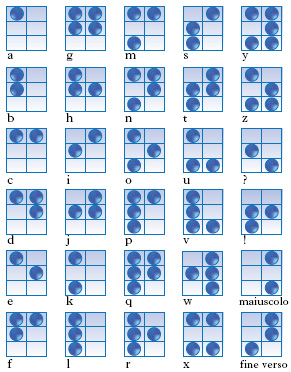
How was Braille invented?
Louis Braille was born in Coupvray, France on January 4, 1809. He attended the National Institute for Blind Youth in Paris, France as a student. At the time, books were created using embossing which was laborious to produce, difficult to read and difficult for individuals to write. While attending college, Louis wished he had more books to read. He experimented with ways to create an alphabet that was easy to read with the fingertips. The writing system he invented at the age of 15 evolved from the tactile code “Ecriture Nocturne” (Night Writing), invented by Charles Barbier for sending military messages that could be read on the battlefield at night, without light. All information on the Braille Code can be found in the Online Louis Braille Museum.
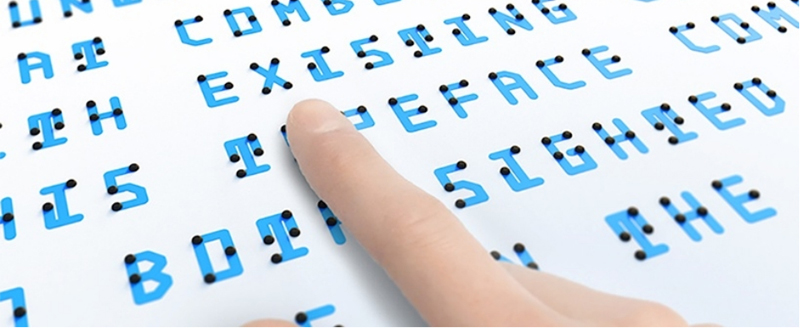
LEGO BRAILLE
John Goodwin, CEO of the LEGO Foundation, says: “Blind and visually impaired children have dreams and aspirations for their future just like sighted children, they have the same desire and need to explore the world and socialize through play, but they often face involuntary isolation as a consequence of exclusion from activities“. LEGO Braille is developed by the LEGO Foundation, the LEGO Group and partners from the blind community. Fully compatible with existing LEGO toys, LEGO Braille Bricks are a fun and playful way to learn Braille.
LEGO Braille is a playful tool for teaching Braille to blind and visually impaired children. The toolkit includes adjusted LEGO bricks that match Braille. Each colored brick has a printed letter or symbol that allows the visually impaired and the blind to interact and play in equal conditions. A pedagogical concept that is based on learning through the principles of play and which guarantees an optimal teaching and learning experience. The aim is to inspire blind and visually impaired children to learn Braille and as such support them in achieving their goals and dreams in life.
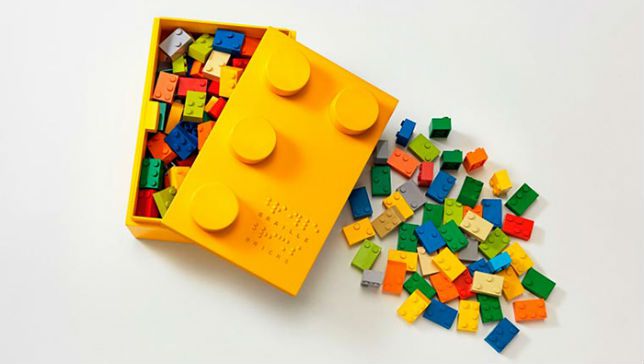
LEGO Braille is a Passage Door divided into 4 points:
- Learning through play: A principle that allows children to become creative, committed and lifelong students. By unleashing the power of play, children can develop the wide range of skills they need to thrive and succeed in the 21st century.
- Life skills: Learning Braille is said to be crucial for blind and visually impaired children as it allows them to develop a variety of essential life skills, granting them intellectual freedom, independence and equal access to education, learning and work.
- Inclusive learning: The concept presents the innovative and inclusive opportunity to teach blind and visually impaired children side by side, offering them a fun and playful way to engage, interact and learn together.
- Enjoyment and fulfillment: Bring joy to learning and social interaction through playful games and innovative teaching methods that pave the way for greater security, creativity, problem solving and communication necessary to support life goals.
The LEGO Braille Story of Aya, Francis and her Blind class!
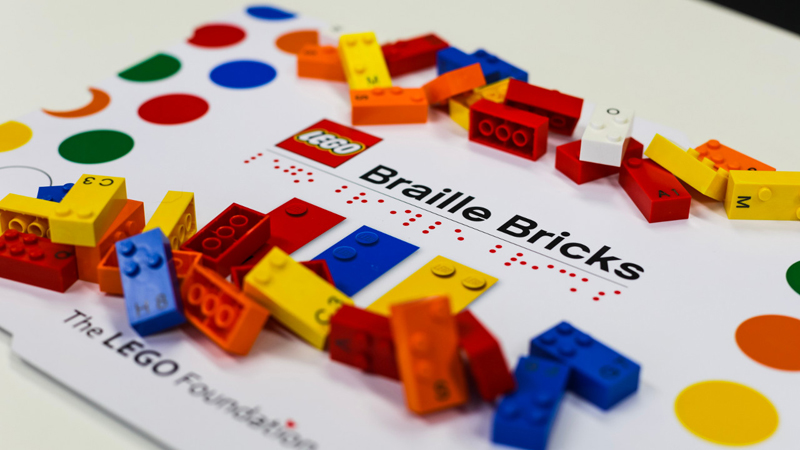
In a London classroom at the Leonie Masterson Institute, students learn to read by touch. All students are blind or visually impaired, and that day (2019 – LEGO Braille Test) 17-year-old Aya and 18-year-old Francis are helping their classmates learn Braille.
“When I was young, I didn’t think I’d ever be able to write or read,” says Francis.
Braille is not as easy as ABC, it takes time and a dedicated teacher who knows. And this is not common. So, LEGO has taken a giant step with the new Braille Bricks. The studs on these LEGO bricks have been specially rearranged to represent letters, numbers and symbols, the bricks of language.
“It’s a good way to bring blind and visually impaired people together, playing with LEGO,” says Aya.
LEGO hopes the new Braille bricks will bridge the gap so that anyone can use them immediately.
“You are making learning fun,” says Ian Lee.
“I love Braille and I love finding ways to teach it,” says Masterson.
And they’re having so much fun in class as kids that it can lead to success as adults, Blindness Charities say.
“There is a direct link between Braille literacy and the probability of getting a job; It’s that simple. If you are literate, if you can read and write, you are more likely to get a job,” said Steve Tyler, Director of Assistive Technology at the Leonard Cheshire Disability Center in the UK.
The National Federation for the Blind says there is a crisis in America when it comes to Braille literacy. More than a million people in the United States are legally blind, but less than 10% can read Braille. Unemployment among the blind is over 70% and nearly 90% of blind American children are not learning Braille.
Scary numbers for LEGO, which has decided to help build a new generation of blind readers. “It was an opportunity for us at LEGO to bring learning through play to children, including children with visual impairments,” said Diana Ringe Krogh, Head of Defense at the LEGO Foundation. “We strongly believe in the power of the game. We believe that children learn best through play”.

The LEGO initiative offers these students not only the ability to construct sentences, but to shape their future. LEGO Braille comes shortly after the publication of a study showing that blind people’s brains are rewired to allow them to track moving objects through sound.
How LEGO Braille Bricks help kids learn!
LEGO Skateboard For Braille Skateboarding
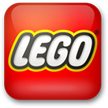


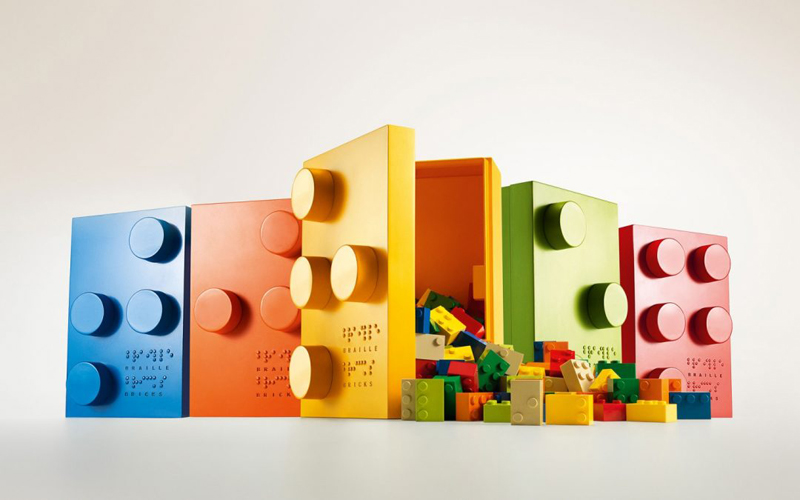

You must be logged in to post a comment.